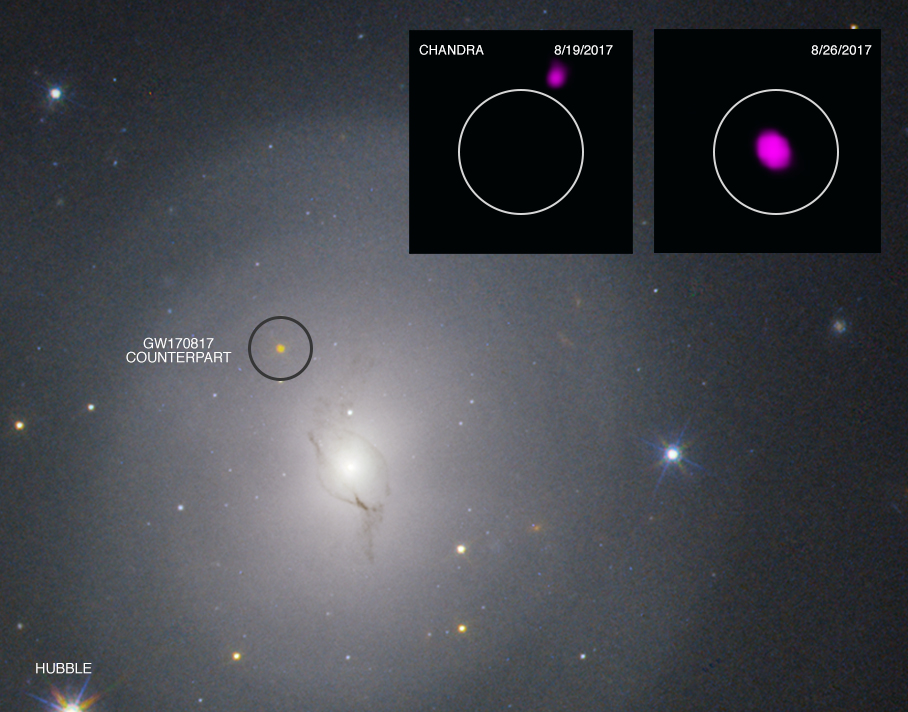
 Credit: X-ray: NASA/CXC/Northwestern U./W. Fong & R. Margutti et al. & NASA/GSFC/E. Troja et al.; Optical:NASA/STScI
Credit: X-ray: NASA/CXC/Northwestern U./W. Fong & R. Margutti et al. & NASA/GSFC/E. Troja et al.; Optical:NASA/STScI
Basking in the Afterglow
The gravitational wave event that was detected on August 17, 2017 nearly simultaneous with a Gamma-ray burst was a history-making event. Using a combination of three gravitational wave observatories along with Gamma-ray data from Fermi and INTEGRAL, a refined position on the sky for the event was announced, and the search was on. Nearly every available telescope joined in
the hunt. An optical transient in a galaxy known as NGC 4993 was discovered by the One-Meter, Two-Hemisphere team, which was soon realized as the counterpart to the gravitational wave and Gamma-ray source. This discovery allowed immediate, detailed followup observations of this counterpart, and opened the door to "multi-messenger" astronomy, the study of phenomena in the Universe using the combination of electromagnetic and non-electromagnetic emission. The image above shows a Hubble Space Telescope observation of NGC 4993, with the optical counterpart circled. Think about it: we have now witnessed the collision and merger of two neutron stars, tiny, ultradense objects only a few kilometers across, an event that occurred 140 million years ago. The inset shows two observations of the area around the optical counterpart obtained by the Chandra X-ray Observatory. The image taken just two days after the event did not detect any X-ray emission from the counterpart; however, a followup Chandra observation one week later showed that the counterpart was now visible in X-rays. The X-ray emission, in combination with the optical, infrared, radio, Gamma-ray and gravitational wave information, for the very first time provides us with detailed knowledge of how merging neutron stars produce short Gamma-ray bursts, create heavy elements which are important for human life, generate powerful, narrow jets of particles, and even lets us understand how this jet is oriented to our line of sight.
Published: October 23, 2017
<
HEA Dictionary ● Archive
● Search HEAPOW
● Other Languages
● HEAPOW on Facebook
● Download all Images
● Education ● HEAD
>

Each week the HEASARC
brings you new, exciting and beautiful images from X-ray and Gamma ray
astronomy. Check back each week and be sure to check out the HEAPOW archive!
Page Author: Dr. Michael F. Corcoran
Last modified Tuesday, 27-Feb-2024 10:15:18 EST


